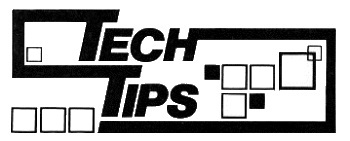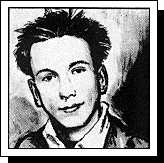


Stardate: some time after the copy deadline!
Simon Goodwin’s mission: to boldly (and italically) report on POWERPRINT, to debug LASER GENIUS, and to seek out Strange New Graphics on the Spectrum 128.

Cast out that expensive typesetting equipment — let’s produce CRASH the POWERPRINT way!
Powerprint II is a graphics package for the artistically inept. You can use it to design signs, business cards, banners, price tags, tickets, wallcharts and just about anything else that revolves around text, boxes and borders rather than free-hand drawings. It’s incredibly easy to use and great fun.
When I received Powerprint II for review I was less than enthusiastic. It’s the program BUTTERCRAFT SOFTWARE use to design their adverts, which always look pretty tatty. Having used the program, I’ve changed my mind. This package is so friendly, and so flexible, that it deserves the attention of every ‘serious’ Spectrum user.
Powerprint II is pretty useless unless you’ve got a printer, though you could perhaps use it for video titles. I tested it with a humble ZX Printer, but it will work with any printer that can COPY the Spectrum display. It can be easily converted to run from Microdrive; instructions are provided.
The 16-page manual, in a crushproof cassette box, is quite stunningly effective as an introduction to the program. The first page contains three pictures, and text designed with Powerprint.
It explains that you select the place on the screen where you want text by moving a blue rectangle, called the print window. You can change the size of this rectangle from one character-square to the whole screen, with four keys. Another four keys move it around the screen. “Think of it as a sort of adjustable ‘rubber stamp’ that you can set to any size or position”, the manual suggests. “Whenever you press the PRINT control, any text you have previously entered expands to fill the current window.”
The next page contains three more pictures illustrating this process. You press SHIFT T, then enter some text. You position the window as required. Then you press SHIFT P. A palette of 42 different styles — rather like wallpaper patterns — appears. You can select between them by pressing a letter (capital or small), or you can invert all the choices. Another keypress gives you a 3D shadow on lettering. When you’ve made your choice the screen reappears and the text pops up in the required style, expanded to fill the window.
The basic shape of characters is taken from one of five character sets, including bold, extra bold and outline letters. You can add up to four character sets of your own, which is a good thing as the standard ones are not brilliant. The characters are expanded to fill the window, and the pattern is overlayed on top, to give zillions of different styles.
You can also fill a window with a pattern. If you then fill the middle with nothing, you get a decorative border. Lines can also be drawn at various offsets around a window. You can invert the contents of windows, swapping Ink for Paper and vice versa, and clear windows or the whole screen. Naturally, you can COPY the screen to your printer at any time.
As befits well-designed software, any command can be undone by pressing ‘U’ if it has an unexpected effect. This facility is vital.
You can save screens to cassette or Microdrive, and load them so that you can use Powerprint II in conjunction with a drawing package like The Artist. Each feature is clearly and concisely explained in the manual.
The final option is Superprint mode. This lets you scale the display up by a factor of up to 32 times vertically or horizontally (or both) before printing it out. The printout is in sections, with dotted lines between them; it’s up to you to stick it all together.
The program is simple — a mixture of BASIC and Machine Code — and it can get confused if you press EDIT while entering text, but the ergonomics are generally very good... in fact this is the most friendly utility I’ve ever used. It has the same sort of appeal as throwing paint pots against a wall, but the results are better!
I found it very easy to use Powerprint. The results are a bit tatty, because the package is based around a Spectrum screen-sized window and monospaced 64 pixel characters (zoomed up as required), but the sheer entertainment value of this package makes up for its ultimate limitations. If you want to learn about layout, or you just want to have some fun doodling, Powerprint II is great.